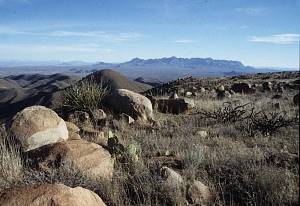Middle Archaic Lifeways
in the Eastern Trans-Pecos of Texas
The Middle Archaic period in Trans-Pecos Texas is considered to date between 4500 and 3000 years ago (2500-1000 B.C.) This period followed a long drought that had probably reached its peak about 4500 years ago, so that by the beginning of the Middle Archaic period, desertification of the northern Chihuahuan Desert was most likely complete.
Because desert-adapted plant species succeed by producing copious amounts of blossoms, seeds, and fruit, and by storing up nutrients in their bases and leaves, they provide relatively plentiful, immobile, easily gathered, and varied food resources. Easily gathered perhaps, but some plants required specialized, labor-intensive processing methods. Plant foods may have dominated the native diet during this period, and the availability and abundance of plant resources most likely dictated their seasonal rounds.
The indigenous groups of the Middle Archaic period harvested the fruits, pads, blossoms, and seeds of desert succulents as a major supplement to their diet, along with grass seeds, fruits, nuts, berries, and roots. Middle Archaic hunter-gatherer groups probably also made seasonal visits to gather acorns from residual oak forests and perhaps to the higher elevations to harvest pinyon nuts.
Middle Archaic peoples hunted with atlatls and darts. The dominant dart point styles, such as Langtry and Jorra points, have contracting stems. In contrast, Late Archaic peoples made expanding stem points. Within this strong contracting stem tradition, Middle Archaic peoples fashioned a variety of point styles.
The dependability and abundance of desert plant species would have provided a strong dietary supplement that facilitated what appear to be a substantial population increase during the Middle Archaic, particularly in the southern part of the Big Bend. This inference is based on increased frequency of Middle Archaic points and sites relative to the Early Archaic. Middle Archaic sites occur in many more places across the landscape including a wider range of landforms and ecological niches.
Data suggest that indigenous Middle Archaic peoples had successfully responded to changes in the resource base, and that human adaptation to the desert environment was becoming perfected. In fact, there appears to have been an entrenchment of a lifeway that had probably been developing during the Early Archaic.
By this time, plant processing methods were devised that rendered edible the long chain, indigestible carbohydrates stored in the bases of plants of semi-succulent desert plants, especially members of the Agave family including sotol and lechuguilla. The archeological signatures of this plant baking include intensively used sites and large burned rock cooking features known as burned rock middens. These impressive accumulations of spent cooking stones (heat-fractured burned rocks) were the result of using heated rocks in layered cooking arrangements known as earth ovens.
Briefly, a hot fire fueled by wood was built within a shallow pit and covered with rocks. Semi-succulent plant bases were piled on the heated rocks, along with protective layers of green plants (such as prickly pear pads) that also provided moisture. These layers were then sealed with a thick layer of earth, and the earth oven baked for several days. The sealed oven functioned as a steam chamber, maintaining the food at a temperature of about 100 degrees Centigrade (boiling temperature). This 48-hour process broke down the indigestible compounds into very sweet short-chain sugars. When the baking was complete, the roasted plant parts could be removed and eaten in this state or pounded and formed into cakes which were dried and could be readily stored or transported.
A remnant of such an oven was recently excavated at the Paradise site (41PS914) in the heart of the Big Bend. There, a 4,000 year-old, partially dismantled earth oven and piles of discarded fire-cracked rocks were carefully documented. Artifact patterning revealed plant-processing and stone-tool-production areas and suggested a high degree of organization and planning. (See Paradise site for more details.)
Two Middle Archaic sites recently excavated in Big Bend National Park also indicate an organized society with planned seasonal rounds and special ceremonies. The location of a small mountaintop site in the Rosillos Mountains, at an elevation of over 5400 feet (1660 meters), and located over 1300 feet (400 meters) above the nearest reliable water source, suggests non-utilitarian activities at this site. Several contracting stem Middle Archaic dart points were recovered from the Rosillo Peak site (41BS762). While the summit area is expansive, all occupations through time were focused on one very small area on the mountain top. It seems likely that some ritualistic tradition dictated the visits to this highly specific remote location.
Another probable example of Middle Archaic ceremonialism is an artifact cache recently excavated at an elevation of 2,000 feet, about half a mile (one kilometer) from the Rio Grande. During archeological field survey, seven contracting stem dart points and preforms had been observed eroding out from beneath a small cairn of boulders. Numerous rodent burrows under and through the cache probably explain the array of the seven dart points found on the surface. During excavation of the Lizard Hill site, six more points or preforms were uncovered, the last three positioned within a nest of two overlapping fresh water mussel shells and covered by a smooth river cobble. Both shells have drill holes, indicating they were probably personal or ritual ornaments. One shell has use wear along the lower edge, suggesting it was used as a scoop of some sort. Enigmatic arrangements of large stones elsewhere on the site suggest possible ritual activities.
During the Middle Archaic period, the people adapted to the desert environment and thrived. They learned to process desert succulents and to extract a balanced diet from the floral and faunal resources, gradually modifying ancient subsistence strategies. Throughout, they hunted with atlatls and darts fitted with contracting stem points. They fashioned baskets, mats, sandals, packs, and a variety of cordage from the fibers of plants of the agave family, possibly replacing a storehouse of perishable goods traditionally fashioned from animal skins, stomach linings, tendons, etc.
They found the desert environment well suited to gathering. The desert flora included a variety of lifeforms—leaves, blossoms, seeds, fruits, pads, bulbs, and leaf bases. In contrast, forests and grasslands often contain only one edible lifeform to be gathered such as acorns, pinyon nuts, or grass seeds. Seasonal visits were no doubt planned to gather these resources. But forest and grassland life forms are also easily gathered by foraging and grazing animals, and in the Big Bend, residual forests and grasslands were never far away, with only a little increase in elevation or latitude. The strong hunting element throughout the tool kits of the Middle Archaic period indicate that hunting remained an important component of native subsistence strategies, and it would seem that gathering the abundance of the desert supplemented and facilitated this hunting tradition.
Contributed by Andrea J. Ohl.
Sources:
Ohl, Andrea J.
2006 The Paradise Site: A Middle Archaic Campsite on the O2 Ranch, Presidio County, Texas. Papers of the Trans-Pecos Archaeological Program No. 2, Center for Big Bend Studies, Sul Ross State University.
Mallouf, Robert J., William A. Cloud, and Richard W. Walter
2006 The Rosillo Peak Site: A Prehistoric Mountaintop Campsite in Big Bend National Park, Texas Papers of the Trans-Pecos Archaeological Program No. 1, Center for Big Bend Studies, Sul Ross State University.
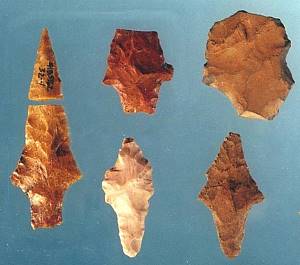
|
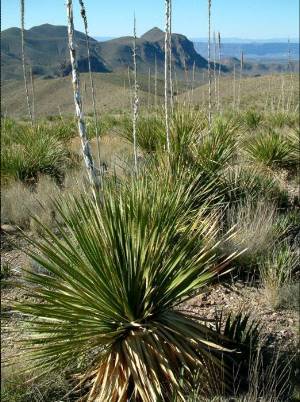
|
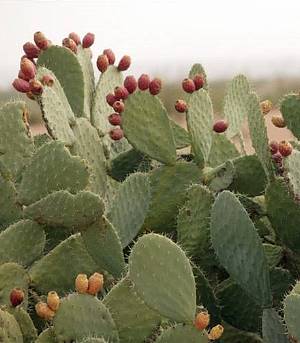
|
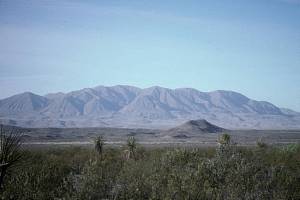
|
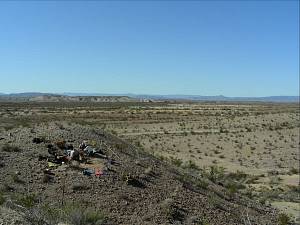
|
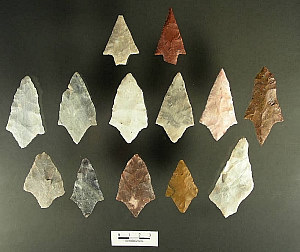
|
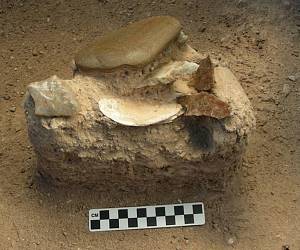
|
